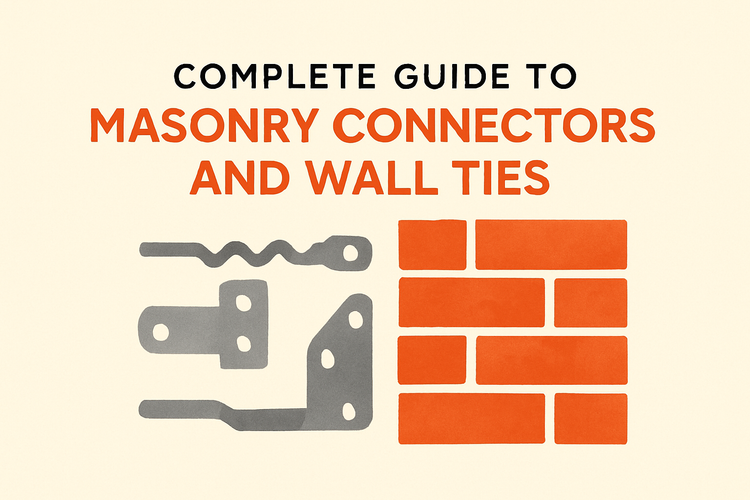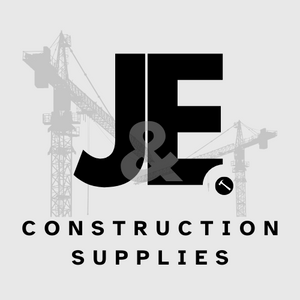Complete Guide To Masonry Connectors And Wall Ties In Construction

Types of Masonry Connectors and Wall Ties
Masonry connectors and wall ties serve critical functions in stabilising and securing different elements of a masonry structure. Understanding their types helps ensure you’re selecting the right tool for the job.
A variety of wall ties and connectors exist, each tailored for a specific role within a wall system. These include cavity wall ties, veneer ties, adjustable ties, and seismic wall ties. Cavity wall ties are typically used across the cavity between inner and outer masonry leaves, offering structural connection and moisture control. Veneer ties are popular in scenarios where a masonry veneer requires strong anchorage to a backing structure.
Adjustable ties provide flexibility in installation, especially when wall thickness or alignments vary during construction. Seismic wall ties are used in high-risk zones to maintain structural integrity under lateral loads. Knowing the application and limitations of each type helps in achieving maximum performance from masonry connectors and wall ties, especially in combination with other timber connectors such as Connectors for Glulam Timber.
Installation Techniques for Proper Structural Performance
Correct installation is essential in ensuring that masonry wall ties function effectively. Improper placement and spacing can lead to structural weaknesses.
Wall ties must be embedded correctly within the mortar bed joints, ensuring firm connection between the internal and external leaves of cavity walls. Typically, they are placed horizontally and spaced at regular intervals—around 450mm vertically and 900mm horizontally—for conventional construction. However, spacing requirements may vary based on local building codes, wall height, and type of masonry units used. Adjustable ties allow more flexibility where perfect alignment is hard to achieve on uneven surfaces or materials.
Moisture management is also vital. Many modern wall ties feature drip features that prevent water transfer from the outer to the inner leaf. This small design detail plays a significant role in preventing issues like damp penetration and efflorescence. Proper orientation and downward sloping of ties are crucial in utilising this feature.
Material Composition and Durability
The longevity and performance of wall ties greatly depend on the material from which they are manufactured.
Stainless steel is the most common material used for modern masonry connectors. It offers excellent resistance to corrosion, which is an essential feature in moist environments or external façades. Galvanised steel options are more budget-friendly but may not provide the same longevity, especially in coastal or industrial locations where higher levels of corrosion are prevalent.
The quality of the material also impacts compatibility with other construction elements. For instance, stainless steel should be used alongside non-corrosive Post Base fittings or Restraint Straps to avoid galvanic corrosion. Assessing environmental exposure and structural demands helps determine the right material and treatment level for specialised applications.
Compliance with Building Codes and Standards
Using the correct masonry connectors isn't just about performance—it's also a matter of compliance.
All wall ties and masonry connectors should meet the British Standards such as BS EN 845-1, which sets the minimum requirements for mechanical properties, corrosion protection, and durability. Adhering to these codes ensures that the building project maintains structural safety over time. Inspectors often verify proper usage during site checks, especially in large-scale housing, commercial projects, or renovations involving load-bearing structures.
Non-compliance could result not only in costly repairs but also potential hazards during extreme weather or seismic events. Therefore, when integrating elements like High Wind Ties & Timber Connectors, it's crucial to ensure compatibility with existing masonry ties, both structurally and regulatory-wise.
Maintenance and Retrofitting of Existing Structures
Over time, older buildings may require inspection and retrofitting of wall ties to maintain structural integrity.
Signs of tie failure include bulging brickwork, cracked mortar joints, or rust staining. In such cases, retrofit wall ties can be installed without removing the existing façade. Stainless steel helical wall ties are often used due to their ease of installation and minimum invasiveness. These are drilled directly into position and fixed using specialist resins or mechanical fixings.
For structures where original ties have corroded, it's not enough to simply add new ones. The old, compromised ties should be isolated to stop them from contributing to further damage. This ensures that the new wall ties bear all transferred loads. Professionals often work in tandem with internal elements like Joist Hangers or roof anchor systems to maintain overall system stability when retrofitting complex assemblies.
